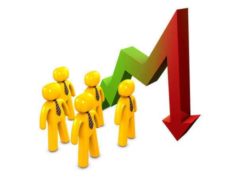
Inflation rates are statistics-oriented, which is fairly evident from the way inflation as a whole works. The overall inflation rate is a number and is usually expressed as a percentage change from the previous month or year. Inflation rates in America and abroad are not just arbitrary figures handed down to the people by the economic sages of our time. In other words, quite simply, the inflation rate has to come from somewhere.
One of the primary determinations of rates in the United States is tallies of what is known as the Consumer Price Index (CPI), a synopsis of the changes in price (for better or for worse) of consumer goods and services. Indeed, it would not be feasible to include the rise and fall of every commodity, which is why the CPI uses a “basket” of them designed to be representative of the market at large.
However, consumers are only part of the equation, for while their behavior dictates the welfare of the market-based economy, they are not the ones to set the prices, and they are certainly not the powers-that-be that affect the inflation rate. Coupled with the aforementioned CPI, inflation rates must also put into focus what are known as Producer Price Indices (PPI).
Usually set in motion by the earliest buyer-seller transactions per measurement period, the PPI program features data on a number of different commodities that, as with the CPI, would appear to be a good sample for the sake of generalizability to other producers.
The current inflation rate in of itself does not do a lot of good for analysts, be they amateurs or professionals. Inflation is fundamentally a relational science, and thus, a number of analyses are used by professionals and other interested parties based on their purpose.
Some reviewers, for example, may find a month-by-month breakdown of inflation rates to be useful as dictated by the variable state of the economy and the high fluctuation of item costs. Then again, some may be looking at inflation rate from a more historical perspective, calculating the difference between the current rate and that of a base year.
It should be noted that amidst scrutiny of inflation rates, not all goods and services are weighed equally, a policy which makes up for in accuracy what it loses in fairness. After all, some commodities are going to be more essential than others or more highly-demanded.


















